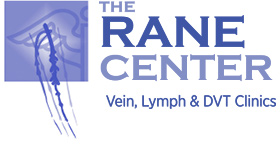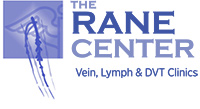Here are some of the most helpful and frequently asked medical questions regarding venous conditions and venous treatment options.
A large portion of The Rane Center’s patients are from out of state. Click here for more information about patients traveling from out of state.
A blood clot is a gel-like mass formed by platelets and fibrin in the blood to stop bleeding. While clots are beneficial when they stop bleeding from an injury, they can be dangerous when they form abnormally in the bloodstream.
Symptoms can vary depending on where the clot is located but may include swelling, pain, redness, warmth in the affected area, and, in severe cases, shortness of breath or chest pain.
Blood clots can form due to several factors, including prolonged immobility, surgery, certain medical conditions (like cancer or heart disease), smoking, obesity, and the use of certain medications, such as birth control pills.
Blood clots are most common in the legs (deep vein thrombosis, or DVT), but they can also occur in the lungs (pulmonary embolism), brain (stroke), heart (heart attack), and other parts of the body.
DVT is a condition where a blood clot forms in a deep vein, usually in the legs. It can cause pain and swelling and can lead to serious complications if the clot travels to the lungs.
A pulmonary embolism is a blockage in one of the pulmonary arteries in the lungs, usually caused by a blood clot that has traveled from the legs (DVT). It can be life-threatening and requires immediate medical attention.
Risk factors include age, prolonged immobility, recent surgery, pregnancy, cancer, obesity, smoking, certain genetic conditions, and the use of hormone therapy or birth control pills.
Blood clots can be diagnosed using various methods, including ultrasound (for DVT), CT scans (for PE), D-dimer blood tests, and sometimes MRI or venography.
Treatments include anticoagulant medications (blood thinners), thrombolytic therapy (clot-busting drugs), compression stockings, and in some cases, surgical removal of the clot.
Yes, prevention strategies include staying active, maintaining a healthy weight, avoiding smoking, using compression stockings, staying hydrated, and taking prescribed blood thinners if you’re at high risk.
Seek immediate medical attention if you suspect a blood clot, especially if you have symptoms like unexplained leg pain, swelling, or shortness of breath.
With treatment, a blood clot can start to dissolve within a few days to weeks, but the complete resolution may take several months, depending on the clot’s size and location.
Yes, individuals who have had a blood clot are at an increased risk of developing another, especially if underlying risk factors are not addressed or managed.
Staying active, maintaining a healthy weight, avoiding prolonged immobility, quitting smoking, and following your doctor’s advice on diet and medication can help reduce the risk.
Yes, birth control pills that contain estrogen can increase the risk of blood clots, particularly in women who smoke or have other risk factors.
Long-term effects can include post-thrombotic syndrome (chronic pain and swelling in the affected limb), chronic venous insufficiency, and an increased risk of future clots.
Post-thrombotic syndrome is a condition that can develop after a DVT, characterized by pain, swelling, and skin changes in the affected leg, potentially leading to chronic discomfort.
Pregnancy increases the risk of blood clots due to changes in blood flow and clotting factors, as well as pressure on veins from the growing uterus. The risk remains elevated for up to six weeks postpartum.
Regular exercise improves circulation and can help prevent blood clots. However, if you’re at high risk, consult your doctor before starting any exercise program.
Avoid prolonged immobility, dehydration, smoking, and certain medications that may increase your risk. It’s also important to follow your doctor’s recommendations for any prescribed anticoagulants or preventive measures.

